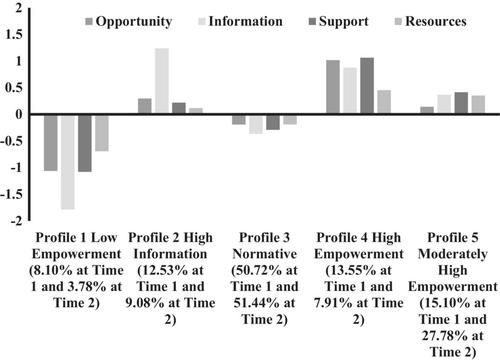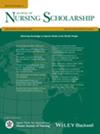A longitudinal investigation of structural empowerment profiles among healthcare employees
Abstract
Purpose
Research on structural empowerment has typically adopted a variable-centered perspective, which is not ideal to study the combined effects of structural empowerment components. This person-centered investigation aims to enhance our knowledge about the configurations, or profiles, of healthcare employees' perceptions of the structural empowerment dimensions present in their workplace (opportunity, information, support, and resources). Furthermore, this study considers the replicability and stability of these profiles over a period of 2 years, and their outcomes (perceived quality of care, and positive and negative affect).
Design
Participants completed the same self-reported questionnaires twice, 2 years apart.
Methods
A sample of 633 healthcare employees (including a majority of nurses and nursing assistants) participated. Latent transition analyses were performed.
Results
Five profiles were identified: Low Empowerment, High Information, Normative, Moderately High Empowerment, and High Empowerment. Membership into the Normative and Moderately High Empowerment profiles demonstrated a high level of stability over time (79.1% to 83.2%). Membership in the other profiles was either moderately stable (43.5% for the High Empowerment profile) or relatively unstable (19.7% to 20.4% for the Low Empowerment and High Information profiles) over time. More desirable outcomes (i.e., higher positive affect and quality of care, and lower negative affect) were observed in the High Empowerment profile.
Conclusions
These results highlight the benefits of high structural empowerment, in line with prior studies suggesting that structural empowerment can act as a strong organizational resource capable of enhancing the functioning of healthcare professionals. These findings additionally demonstrate that profiles characterized by the highest or lowest levels of structural empowerment were less stable over time than those characterized by more moderate levels.
Clinical Relevance
From an intervention perspective, organizations and managers should pay special attention to employees perceiving low levels of structural empowerment, as they experience the worst outcomes. In addition, they should try to maintain high levels of structural empowerment within the High Empowerment profile, as this profile is associated with the most desirable consequences. Such attention should be fruitful, considering the instability of the High Empowerment and Low Empowerment profiles over time.
Registration
NCT04010773 on ClinicalTrials.gov (4 July, 2019).


 求助内容:
求助内容: 应助结果提醒方式:
应助结果提醒方式:


